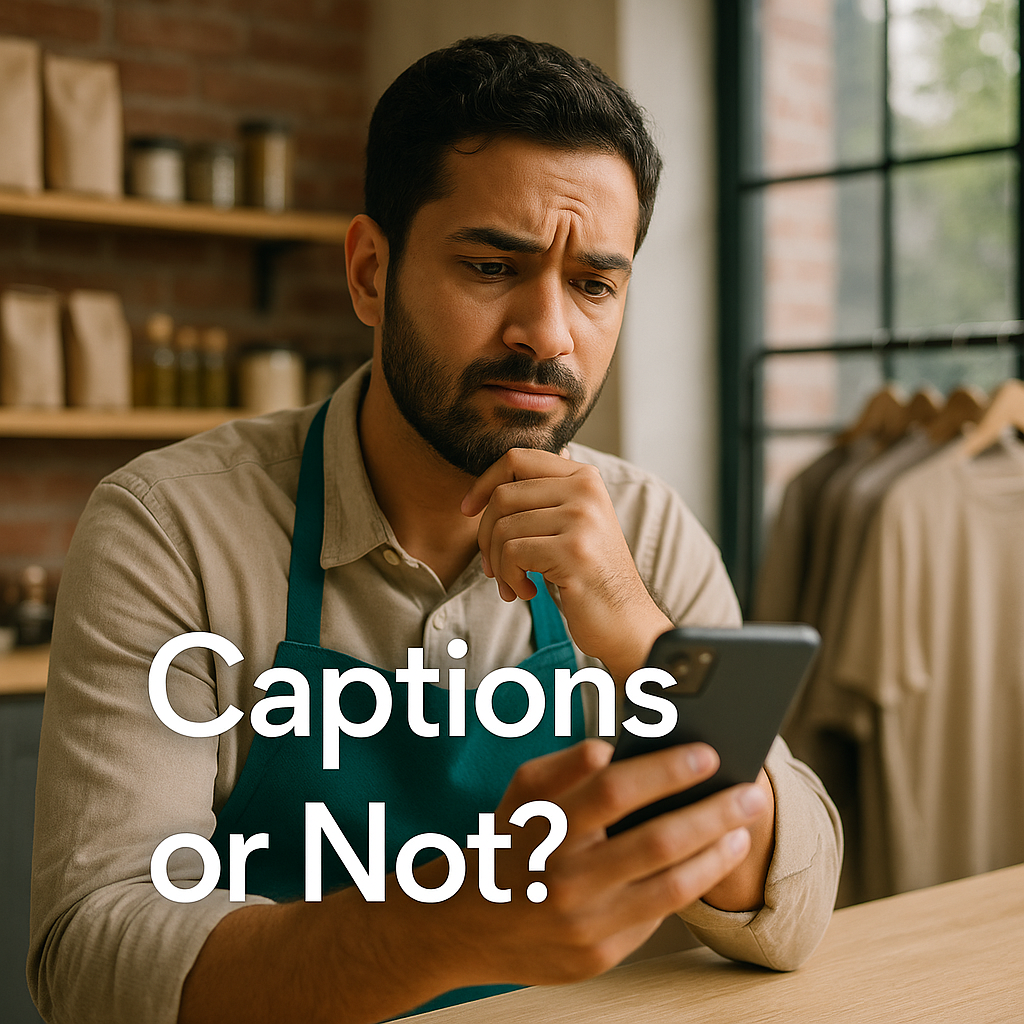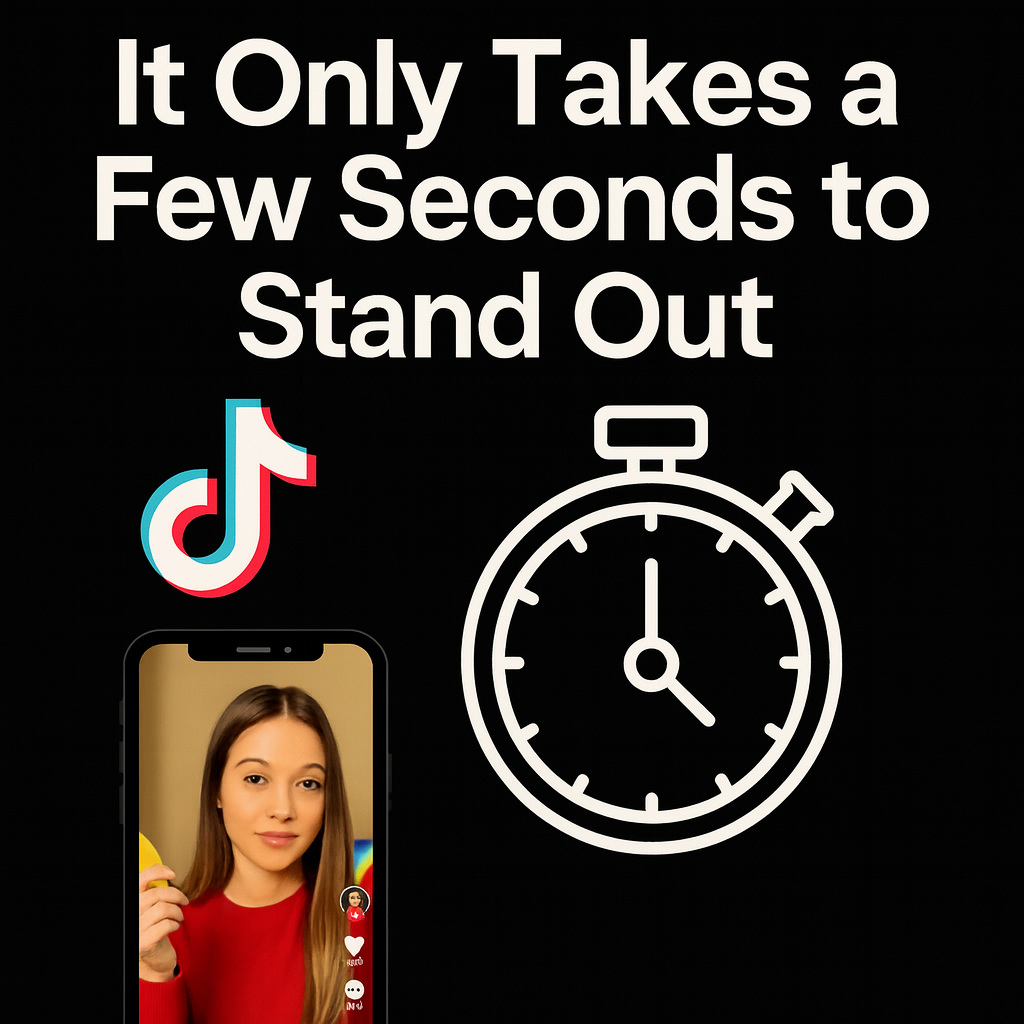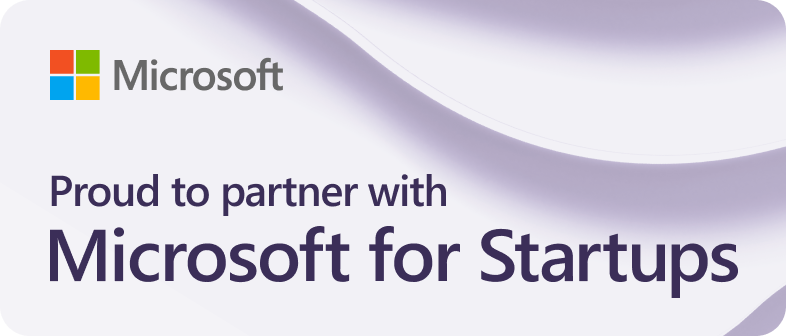As small business owners, knowing how to identify and reach your target audience in marketing strategy is crucial for the success of your businesses.
Knowing your target audience in marketing and how to reach them best allows you to create campaigns that resonate with their needs and desires, ultimately leading to increased engagement, conversions, and revenue.
But how do you identify and reach your target audience in marketing?
In this post, we’ll explore seven proven strategies to help you better understand and connect with your audience.
From conducting market research to analyzing website metrics, we’ll cover everything you need to know to target your audience effectively.
We’ll also provide examples of how to use these strategies to grow your customer base and revenue.
Table of Contents
7 Proven Strategies to Identify and Reach Your Target Audience in Marketing
So, this post will provide actionable insights and tools to help you better define, connect with, and engage your target audience, whether you’re just starting out or looking to fine-tune your current marketing strategy.
Let’s dive in!
![7 Proven Strategies for Identifying and Reaching Your Target Audience in Marketing: Supercharge Your Small Business's Success [Guide] 1 Target Audience in Marketing - How To Identify and Reach Team - Sociosight.co](https://sociosight.co/wp-content/uploads/2023/02/7-Strategies-410x1024.png)
Defining Your Target Audience
Defining your target audience in marketing is about figuring out who will most likely buy your product or service.
It’s like having a secret weapon that helps you craft marketing messages that speak directly to your audience.
Do you struggle with managing multiple social media platforms for your brand's presence?
The Sociosight app can help you simplify the process and save you time. With Sociosight, you can publish, schedule, and monitor posts and engage with your followers across multiple social media platforms, all from one dashboard.
Get started today with a free sign-up!
Register Now for Free

Think about it – if you’re selling yoga pants, you’re probably not going to target seniors who are more into wearing slacks. You’re going to target young, active people who are interested in fitness and style.
Knowing your target audience in marketing can save time and money by focusing your efforts on the people who are most likely to become customers.
For example, suppose you’re a small business that sells organic skincare products. In that case, your target audience in marketing may be people interested in natural and organic ingredients. You’d want to focus your messaging on the benefits of using natural skin care products, like softer, healthier skin.
Identifying your target audience in marketing is especially important for small businesses with limited budgets.
By targeting your ideal customers, you can create more effective marketing messages that resonate with them and increase the chances of turning them into loyal customers.
For instance, if you’re a local coffee shop selling artisanal blends, your target audience in marketing may be coffee enthusiasts willing to pay more for high-quality coffee. So you’d want to market your blends as unique and locally roasted to appeal to this group.
Conducting Marketing Research
Once you know your target audience in marketing, the next step is to research their needs, preferences, and behaviors.
Marketing research takes many forms and can include a variety of methods, such as online surveys, focus groups, social media surveys, interviews, observation, and field experiments.
![7 Proven Strategies for Identifying and Reaching Your Target Audience in Marketing: Supercharge Your Small Business's Success [Guide] 2 Target Audience in Marketing - How To Identify and Reach Team - Sociosight.co](https://sociosight.co/wp-content/uploads/2023/02/Market-Research-410x1024.png)
Online Surveys
You can use online surveys to gather data from a large group of people quickly and easily.
You can create these surveys using online survey tools like SurveyMonkey or Google Forms and distribute them to your target audience through email, social media, or your website.
For example, you run a fitness studio. You might create an online survey asking your target audience about their fitness habits, goals, and preferred workout styles.
By gathering quantitative data, you can learn more about your target audience’s habits, opinions, and attitudes toward your product or service.
Social Media Surveys
Social media surveys, such as polls on Instagram or Twitter, are a common and effective way to gather data on various topics, such as customer preferences, satisfaction, and demographics.
You can easily create and distribute your polls through your social media channels, providing quick and easy access to your target audience’s opinions and attitudes toward your product or service.
For example, suppose you run a fashion business. In that case, you might conduct a poll on Instagram to ask your followers which color they prefer for a new clothing item.
By gathering quantitative data, you can learn more about your target audience’s habits, opinions, and attitudes toward your product or service.
Interviews
Interviews involve one-on-one conversations with your target audience to get in-depth information about their thoughts and feelings toward your product or service.
You can interview them in person, over the phone, or via video chat through structured or unstructured questions to gather qualitative data.
By gathering qualitative data, you can learn more about your target audience’s motivations, desires, and attitudes toward your product or service.
For example, suppose you run a software company. In that case, you might interview your target audience to get feedback on a new product feature.
Focus Groups
Focus groups are another helpful research method for getting more in-depth feedback on a product or service. Through this method, you can gather qualitative data on your target audience’s opinions, attitudes, and beliefs to better understand your target audience’s needs and behaviors.
Focus groups typically involve gathering a small group of your target audience in marketing and asking them specific questions to gather feedback on your product or service.
You can contact them in the focus group in person or online. You can invite a professional moderator to lead the discussion or facilitate the conversation more informally.
For example, suppose you run a restaurant. In that case, you might hold a focus group to get feedback on a new menu item from some regular customers.
Observation
Observation is another effective way to gather data on your target audience in marketing.
Observation involves directly observing and recording behavior in a natural setting.
For example, suppose you’re a retailer. In that case, you might observe shoppers in a store to gather information about their behaviors and preferences.
You can use this information to create more targeted and effective marketing messages that better resonate with your audience.
Field Experiments
Field experiments involve testing or manipulating variables of your product or service in a natural setting to see how your target audience reacts.
For example, you run a restaurant. You can change the menu layout or pricing to test how it affects customer behavior. Or, if you have your online store, you might change the user interface of your website and provide scoring polls to your visitors to submit their feedback.
Secondary Research
This method involves using existing research and data to understand your target audience in marketing. Secondary research can include market reports, customer reviews, and competitor analysis.
For example, suppose you run a technology company. In that case, you might review your competitor’s websites and customer reviews to understand what features their target audience is looking for in a new product.
Marketing Research is Crucial
So, marketing research is a crucial step in understanding your target audience in marketing.
By using various research methods, including interview surveys, social media surveys, online surveys, focus groups, observation, and field experiments, you can gather the data you need to create more engaging and effective marketing campaigns.
So don’t skip this step – it can be the difference between a successful marketing campaign and one that falls flat!
Developing a Customer Persona
Creating a customer persona or buyer persona, also known as an avatar, is an essential step in developing a marketing strategy that resonates with your target audience in marketing.
A customer persona is a fictional character representing your ideal customer, including information such as demographics, interests, challenges, and motivations.
By creating a customer persona, you can better understand your target audience in marketing and create content that resonates with them.
How to create a Customer Persona?
You’ll want to gather information about your target audience in marketing to create a customer persona. You can do it through market research, surveys, and customer data.
Once you have this information, you can create a detailed profile of your target customer, including their age, gender, income, education level, and interests.
When creating a customer persona, it’s crucial to consider factors such as your target audience’s pain points, motivations, and objections to your product or service.
You may want to consider the following questions:
- What are their biggest challenges or pain points?
- What are their goals and motivations?
- What objections might they have to purchase your product or service?
- What are their preferred communication channels?
- What kind of content do they consume, and will engage?
By answering these questions, you can create a more detailed and accurate customer persona that reflects your target audience in marketing.
Examples of a Customer Persona
For example, let’s say you own a pizza restaurant. Your customer persona might be a college student looking for an affordable and convenient meal. By understanding this persona, you can create marketing messages that appeal to college students, such as promoting discounts for students or posting photos of groups of friends enjoying pizza.
Or, let’s say you run a digital marketing agency. Your customer persona might be a small business owner looking to improve their social media management. By understanding this persona, you can create social media content that addresses small business owners’ challenges when running their social media strategies, such as creating engaging content or managing multiple platforms.
Another example is if you’re a fitness coach, your customer persona might be an individual struggling to get back into shape after having a baby. By understanding this persona’s pain points, you can create content that addresses their specific challenges and motivates them to take action.
Suppose you’re a small business that sells organic skincare products. In that case, your customer persona might be a woman in her early 30s who is health-conscious, environmentally friendly, and interested in natural beauty products. By understanding this persona, you can create marketing messages that resonate with her interests and motivations.
Another example might be your business that sells home fitness equipment. Your customer persona might be a busy professional in their mid-30s who is looking for convenient and effective ways to stay fit at home. By understanding this persona, you can create marketing messages focusing on their equipment’s convenience and effectiveness.
Creating a customer persona can be a simple process, and you can have fun with it and add some humor to your profiles. For example, your persona might be a coffee addict who is always running late or a cat lover who spends all their free time on Instagram.
These personas add personality to your brand and help you connect with your target audience in marketing on a more personal level.
Creating A Customer Persona for Targeted Messages
Therefore, creating a customer persona is essential to understanding your target audience in marketing.
By creating a detailed avatar of your ideal customer, you can craft marketing messages that resonate with them, address their pain points, and motivate them to take action.
So, take the time to create a customer persona for your marketing strategies, including your social media management.
Segmenting Your Audience to Better Target Your Message
Suppose you have completed your marketing research to gather data and create a customer persona. In that case, the next step is to segment your audience.
Once you have created customer personas that represent specific characteristics of individual target audience, you can group them into segments based on similar traits or behaviors.
Segmenting your audience involves dividing your target audience in marketing into smaller, more specific groups based on characteristics such as demographics, interests, and behaviors.
This segmentation allows you to create more personalized content that speaks directly to the needs and interests of each group, resulting in higher engagement and conversations.
For example, you can create different content pillars tailored for a specific segment when you plan your social media content management strategy.
For example, a fitness studio may create different segments that consist of customer personas for busy working moms, young adults interested in weight-lifting, and seniors looking for low-impact exercise. The fitness studio can create personalized content for each group by segmenting the audience.
How To Segment Your Target Audience In Marketing?
There are several ways to segment your target audience in marketing, such as demographic, psychographic, behavioral, and geographic factors.
Demographic segmentation involves dividing your target audience in marketing based on age, gender, and location.
For example, a clothing retailer may segment their audience by age and gender to create targeted advertising campaigns.
Psychographic segmentation involves dividing your target audience in marketing based on interests, values, and lifestyle.
For example, a sustainable fashion brand may segment its audience based on its interest in eco-friendly products.
Behavioral segmentation involves dividing your target audience in marketing based on their past behavior, such as purchase history or website interactions.
For example, an e-commerce website may segment its audience based on its purchase history, offering targeted promotions and recommendations based on past behavior.
Geographic segmentation is another way to segment your audience based on location, which can be helpful for businesses with a physical location.
For example, a restaurant may segment its audience by location to create targeted promotions for customers in specific areas.
So, overall, segmenting your target audience in marketing is a valuable way to improve the effectiveness of your marketing strategies, including your social media strategies.
Tailoring Your Messaging to Your Audience
Once you have clearly defined your target audience, it’s time to deliver your messages.
Crafting messaging that resonates with your target audience is critical to reaching and attracting their interaction with your brand.
In this section, we’ll explore a case study on social media content creation to illustrate step-by-step how to create messaging that speaks directly to your target audience in marketing.
By following these steps, you’ll be able to tailor your messaging to your audience’s needs and interests, resulting in higher engagement and conversions.
![7 Proven Strategies for Identifying and Reaching Your Target Audience in Marketing: Supercharge Your Small Business's Success [Guide] 3 Target Audience in Marketing - How To Identify and Reach Team - Sociosight.co](https://sociosight.co/wp-content/uploads/2023/02/Tailoring-Message-410x1024.png)
Step 1: Identify The Needs And Interests Of Your Target Audience
The first step in tailoring your messaging is to identify the needs and interests of your target audience.
Use the information gathered through research, customer persona, and audience segmentation to understand your audience’s wants and needs.
For example, in our case study, we’ll explore a social media campaign for a fitness studio.
Using customer personas and audience segmentation data, the fitness studio identified its target audience as interested in strength training, cardio workouts, and healthy eating.
Step 2: Develop A Content Batching Strategy
Once you have identified the needs and interests of your target audience, develop a content batching strategy to ensure that your messaging is consistent and aligned with your audience’s interests.
You can start batching your content by creating content pillars or themes that align with your audience’s interests.
For example, suppose your target audience is interested in fitness. In that case, your content pillars may include strength training, cardio workouts, and healthy eating.
For each content pillar, identify the topics, types, and formats of content you will create in advance for each social media channel.
For example:
- Strength Training: topics could include weight-lifting techniques, muscle-building exercises, and tips for increasing strength. Types of content could consist of inspirational, educational, or entertaining content. Format of content could include blog posts, videos, and infographics.
- Cardio Workouts: topics could include running, cycling, and other cardio exercises, as well as tips for improving endurance. Types of content could consist of social media updates, videos, and email newsletters.
- Healthy eating: topics could include meal planning, nutrition tips, and healthy recipes. Types of content could include blog posts, social media updates, and email newsletters.
Types of content for each content pillar above could include inspirational, educational, or entertaining content. The content format could consist of single images, multiple images, videos, or a combination of pictures and videos.
Once you have your content batching schedule, creating a system for organizing and storing your content is essential.
You can use a content management system or create a content calendar.
Having a system in place allows you to stay on track and ensure that you tailor your messaging to your audience’s needs and interests.
Step 3: Schedule Your Social Media Updates
Once you have developed a content batching strategy, use a social media scheduling tool like the Sociosight App to schedule your social media updates in advance. ‘
This tool helps ensure that your messaging is consistent and aligned with your content batching strategy.
In our case study, the fitness studio used a social media scheduling tool for their social media updates, including photos, videos, and text updates focused on their target audience’s interests.
The scheduling tool and content batching strategies allow them to create a month’s worth of content within seven days.
Step 4: Continuously Monitor And Evaluate Your Messaging
To ensure your messaging resonates with your target audience, you must continuously monitor and evaluate it.
Use social media metrics and other analytics to measure the effectiveness of your messaging and make changes as needed.
In our case study, the fitness studio used social media metrics to measure the engagement and reach of their social media updates. Based on this data, they changed their messaging and targeting, resulting in higher engagement and conversions.
Analyzing Your Online Marketing Platforms to Understand Your Audience
It’s crucial to have a deep understanding of your target audience in marketing to succeed in implementing your strategies.
Once you have defined your target audience, the next step is to reach out to them through tailored messaging that resonates with their interests and needs.
But the process doesn’t stop there – it’s crucial to continuously improve your strategy by analyzing website and social media metrics to gain insights into your audience’s behavior, preferences, and interests.
To get started analyzing your metrics, consider the following steps:
![7 Proven Strategies for Identifying and Reaching Your Target Audience in Marketing: Supercharge Your Small Business's Success [Guide] 4 Target Audience in Marketing - How To Identify and Reach Team - Sociosight.co](https://sociosight.co/wp-content/uploads/2023/02/Analyzing-Online-Marketing-410x1024.png)
Step 1: Define Your Metrics
First, you’ll need to define which metrics you want to track. These metrics may include website traffic, engagement, click-through, and bounce rates if you’re going to monitor your website’s performance. Or, you may track followers’ growth, engagement, reach, and impressions for your social media.
Step 2: Set Goals for Your Metrics
Next, set goals for each metric based on your goals.
For example, your goal might be to increase website traffic by 20% or improve social media engagement by 30%.
Step 3: Use Analytics Tools
There are a variety of analytics tools available that can help you track and measure your metrics. Google Analytics is a popular option for website analytics, while social media platforms often offer their analytics tools. Using these tools, you can gain insights into your audience’s behavior, interests, and preferences.
Step 4: Analyze Your Data
Once you have collected data on your metrics, it’s crucial to analyze it to gain insights into your audience.
For example, you may discover that a large portion of your website traffic comes from a particular geographic region or that your social media audience is most engaged with specific content. Understanding these insights allows you to tailor your messaging to resonate better with your target audience.
Step 5: Continuously Monitor and Adjust Your Strategy
Finally, continuously monitoring your metrics and adjusting your strategy as needed is crucial. Doing so ensures that your messaging is always tailored to your audience’s needs and preferences.
For example, you run a social media campaign for your fitness business. Your goal is to increase engagement with your target audience.
You may discover that your audience is most engaged with videos showcasing workout routines by tracking metrics such as likes, shares, and comments. Armed with this information, you can adjust your content strategy to include more videos that showcase workout routines, which may result in higher engagement rates.
By defining your metrics, setting goals, using analytics tools, analyzing your data, and continuously monitoring your strategy, you can gain valuable insights into your audience’s behavior, interests, and preferences. These strategies will help you tailor your messaging to resonate with your target audience and improve your overall marketing performance.
Conduct a Competitor Analysis to Improve Your Target Audience Identification and Reach Strategies in Marketing
Competitor analysis is integral to identifying and reaching your target audience in marketing.
By analyzing your competitors, you can gain valuable insights into their marketing strategies and identify areas where you can differentiate yourself in the market.
Benefits of competitor analysis
Here are some key benefits of competitor analysis:
Identify Gaps In The Market
By analyzing your competitors, you can identify areas where there are gaps in the market that you can fill.
For example, suppose your competitors are not targeting a specific demographic or offering a particular product type. In that case, you can use this information to create a marketing strategy that targets that particular audience or product.
Learn From Their Successes and Failures.
By studying your competitors, you can learn from their successes and failures.
If they have found success with a particular marketing tactic, you can adapt it to your strategy. Similarly, if they have failed with a specific approach, you can avoid making the same mistake.
Identify Industry Trends
Competitor analysis can also help you identify industry trends and stay up-to-date with changes in the market. Understanding these trends allows you to adapt your marketing strategy to stay ahead of the competition.
How Can You Conduct A Competitor Analysis?
Here are some steps to follow:
Step 1: Identify Your Competitors.
The first step in a competitor analysis is to identify your competitors. This step may include businesses that offer similar products or services, as well as those that target the same audience.
Step 2: Analyze Their Marketing Strategies
Next, you’ll need to analyze your competitors’ marketing strategies. This step may include looking at their website, social media channels, email marketing campaigns, and other promotional materials.
Doing so allows you to gain insights into their messaging, target audience, and overall marketing approach.
Step 3: Identify Their Strengths And Weaknesses
Once you have analyzed your competitors’ marketing strategies, it’s crucial to identify their strengths and weaknesses.
For example, they may be particularly effective at targeting a particular audience but need help with brand differentiation.
Step 4: Use The Insights To Improve Your Strategy
Finally, using the insights from your competitor analysis to improve your marketing strategy is essential.
For example, you may target a specific audience that your competitors have overlooked or differentiate your brand by highlighting your unique selling points.
Conclusion
Identifying and reaching your target audience in marketing is crucial to the success of your small business.
By defining your target audience, conducting marketing research, creating customer personas, tailoring your messaging, conducting surveys and focus groups, analyzing website and social media metrics, segmenting your audience, and conducting competitor analysis, you can create a marketing strategy that resonates with your audience and achieves your business goals.
It’s vital to remember that this process is not a one-time effort but an ongoing one that requires continuous improvement and adaptation.
By staying up-to-date with industry trends, analyzing your results, and continuously refining your approach, you can ensure that your marketing strategy is always effective and successful in reaching and engaging your target audience.
With the strategies outlined in this article, you can supercharge your small business’s success and create a loyal customer base that will help your business thrive for years to come.











